#KROHNEAcademy #sil #functionalsafety
Functional safety (SIL) in the process industry
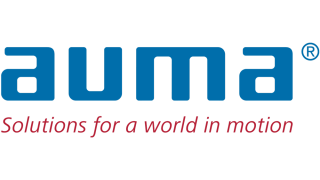

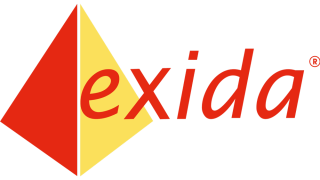
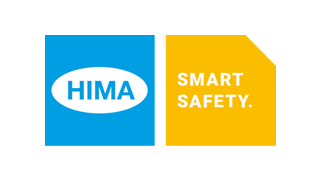


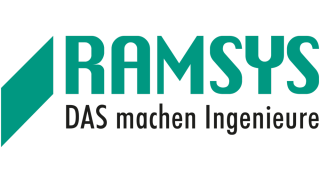

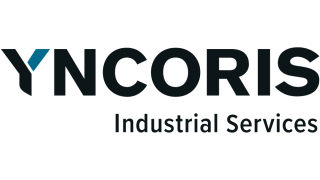
The KROHNE Academy provides an online seminar entitled ‘Functional safety (SIL) in the process industry’ in collaboration with leaders in their respective fields: PHOENIX CONTACT, AUMA, HIMA, SAMSON, Exida, Ramsys, Yncoris and Dow Chemical.
This event is not a product promoting seminar series. It will address key operating issues from the basics, the latest changes of the IEC 61508 as well as ways of optimization of Safety Instrumented Function (SIF) according to the standards IEC 61508/61511.
The KROHNE Academy is a completely free event for registered delegates.
Basics of functional safety
Every system planner and operator of industrial process plants is legally obliged to minimize risk by implementing the use of available state-of-the-art technology where possible. To ensure maximum effectiveness of these measures, a comprehensive system approach is used which considers the entire safety life cycle forming the basis of international standards such as IEC 61511.
In the first part of the Functional Safety Basics the speakers introduce the topic of functional safety and safety integrity level and show key concepts and methodological requirements of functional safety based on the standard IEC 61511. In addition, the speakers present a method for risk identification and analysis. A simple example will show how the safety level for an overfill protection device is determined using a risk graph.
Key Takeaways:
- Why do we consider Functional Safety?
- Which standards are relevant?
- What is the intention of Functional Safety Management?
- How to identify hazards and risks?
- How to estimate the required SIL?
Every system planner and operator of industrial process plants is legally obliged to minimize risk by implementing the use of available state-of-the-art technology where possible. To ensure maximum effectiveness of these measures, a comprehensive system approach is used which considers the entire safety life cycle forming the basis of international standards such as IEC 61511.
In the second part of the Functional Safety Basics the speakers explain how the structure of a safety structure can be defined, particularly with regard to the required redundancy and its constructional implementation, as well as the selection of the components with the required systematic capability and the calculation of PFDavg values. In addition, the speakers present what are the important aspects for FAT, Installation, Commissioning, SAT, Validation, Operation, Maintenance and Modification.
Key Takeaways:
- How to implement a safety instrumented function which fulfills the required SIL?
- Which important design aspects shall be considered?
- What is relevant for the Verification and Validation of the safety instrumented system?
- Which aspects shall be considered during Installation, Commissioning, Operation, Maintenance and Modification?
Podium discussions
Partial proof testing in general offers great opportunities to overall increase plant safety and reduction of proof test efforts. Besides the partial proof testing of automated industrial valve assemblies, since a few years it is also possible to partially proof test sensing elements, such as flowmeters, pressure meters, etc.
However, the test methods above are now also possible fully automated. This presentation gives a detailed overview of the possibilities and benefits of automated partial proof tests
Key-Takeaways:
- Understand the principles of full and partial proof tests
- Lean about the possibilities of automated partial proof tests and their benefits
High Integrity Protection Systems (HIPS) is a multidisciplinary application that requires knowledge of safety and integration of each part of the system. In the procurement process, HIPS applications are treated as commodity products with individual procurement of Initiators, logic solvers and final control elements, which may not fulfill the expectation of the safety standards. Therefore, this presentation highlights the importance of having a single point responsibility for the complete HIPS loop.
Key Take Aways:
- Applicable standards for HIPS - IEC 61511, IEC 61508, API 6A, API 6D, PED 2014-68-EU
- Consistent design and delivery of HIPS System
- Single point responsibility with the specialist.
- Combined expertise of Logic Solver vendor and valve vendor
How to deal with mechanics in safety functions? The methodology of functional safety as described in standards such as IEC 61508 is often understood to be limited to E/E/PE equipment. The important question, how to deal with mechanical components, in particular automated valve assemblies, remained unanswered so far by standards and guidelines, leaving involved parties finding their own and not necessarily congruent answers.
The three speakers share the passion for functional safety and thus look forward to tell the story of their quest answering this question in collaboration and congruence with stakeholders from their perspectives as component manufacturer, assessor and end user, closely linked to their ongoing contribution to respective European standardization.
Key take aways:
- Why it is important to include mechanical components in the assessment of safety instrumented systems
- How to deal with mechanical components in safety instrumented systems
- Why the systematic capability of mechanical components is of utmost importance
End-user and manufacturer perspective on actuator sizing according to WIB standards. In addition, discussion on importance of recurring automatic valve signature test
Key Take Aways:
- Systematic actuator sizing approach according to 6+1 method
- Possible failure detection via diagnostics
Expert presentations
The actuator of a safety instrumented system (SIS) represents the interface between the electrical and the mechanical part of the safety system. Therefore, special care must be taken, when specifying and operating actuators for a SIS, to ensure the proper functioning of the overall SIS. Topics like actuator specification, system integration, online-diagnosis including partial stroke test (PST) and proof testing will be discussed.
Key take aways:
- Important considerations in specifying (electric) actuators for functional safety
- Challenges and solutions in online-diagnostics of final elements
- Proof Test procedures and realistic determination of Proof Test Coverage (PTC)
This presentation shows the importance of focusing on systematic failures which usually start very early in the engineering process and propagate throught the entire product life-cycle.
Key Takeaways:
- Impact and importance of systematic failures.
- Understanding sources of systematic failure in pressure instrumentation.
- Learn how to mitigate the risk of failures.
The safety life cycle is an elementary role in Functional Safety. Systematic errors must be avoided within the planning phase and the corresponding documentation must be created. In this presentation we present a practical example based on the safety life cycle, from planning to commissioning.
Key takeaways:
- Systematic failures and how to avoid them
- Which documentation should be created when considering the safety life cycle
- Practical examples
- In which phases can external service providers support you
There are many cases where products designed for process automation are also used in machinery applications and customers ask for ISO 13849 compliance. This speech compares the relevant requirements of ISO 13849 with IEC 61508 requirements. The aim is to give an idea, which evidence can be re-used for machinery compliance – and what needs to be added or even changed.
Key Takeaways:
- Differences Functional Safety Management
- Differences Architecture Considerations
- Differences Systematic Capability and Verification and Validation
- Differences Quantitative Aspects
This presentation will describe how level meters now play a key role industrial safety loops. First of all, we will review the basics of functional safety. Secondly, we will describe how level meters act in safety loops, protecting industrial plants & employees. Finally, by using practical examples, we will look into the specifics of radar level measurement transmitters.
Key takeaways:
- Review & clear understanding of the basics of functional safety (SIL)
- Comprehending the role of level transmitters in safety loops
- Selection of the right level measuring technology for certain applications (Radar, Guided Microwave, Differential Pressure, MLI/Bypass)
- Analyzing radar level measurement transmitters
- Real field examples as proof of the role level transmitters have in industries
This presentation describes optimization possibilities of safety functions by means of online diagnostics, partial proof tests and the connection of safety- and control loops. It will be shown in detail which measures have which influence on the safety loops and how the operator can profit from the measures. The second part of the presentation will show under which conditions the safety function can be combined with the control function and how this affects the calculation and the quality of the overall plant safety.
Key Takeaways:
- Which optimization possibilities of safety functions exist?
- How to take advantage most efficiently?
- Understand existing and automated partial proof testing methods?
- Lear how to combine safety- and control loops
The methodology of functional safety as described in standards such as IEC 61508 has to be reconsidered in the face of current and future trends and innovations. Drawing upon the examples of the Module Type Package approach and artificial intelligence in the context of safety, the author discusses current trends and the respective influence on functional safety today and tomorrow, as already discussed in expert communities and working groups as well as in standardization commitees.
Key take aways:
- How functional safety can and has to be adopted in the face of innovations and trends
- Why lifecycle experience, systematic approaches, boundary or operating conditions, and additionally … a probabilistic estimation will still form the proper basis for human decision makers
- Why the human factor is and will be of decisive importance
Currently, IEC 61508 is going through its second revision process (IEC SC 65A MT 61508-1/-2 and 61508-3). Since IEC 61508 is a fundamental safety publication, changes to this standard will have an impact on application-specific standards and new product development. This presentation provides a brief overview of the planned changes, highlighting the parts most relevant to users and their potential impact on current and future developments. The third edition of IEC 61508 will update requirements for the design and selection of complex semiconductors, improve the handling of "common cause" faults, and address diagnostic failure, to name just a few important changes. Tool classification and qualification requirements will be expanded. What does this mean for your current development? You may need to improve your tool classification and qualification, common cause failures ("common cause") will need to be analyzed more systematically, you might need to rethink your semiconductor selection, and a software safety analysis might need to be carried out. How much credit can you expect from semiconductors with integrated diagnostics? The answers to these and other questions are provided.
Key Takeaways:
- Requirements for designing and selecting complex semiconductors
- Treatment of "common cause" defects
- Treatment of diagnostics
- Tool classification and qualification requirements
- Software Safety Analysis
- Safety Case
Lecture gives an insight into the modular and field related products for PROFIsafe.
Phoenix Contact provides a broad portfolio for PROFIsafe beginning with the safety related plc up to safety I/O, analogue input and field level IP 67 products.
This lecture presents possible network constellations as well as specific information on capabilities of single components & use cases in process industry.
Speakers: Alex Dusdal, Manuel UngermannThe demand for easy-to-integrate, modular solutions in the process industry is increasing. The reasons for this are the rapidly changing market requirements and the need for flexibility and functional safety in order to integrate subsystems quickly but safely.
As part of this, Phoenix Contact offers an automation concept with PLCnext control technology for the safety-related shutdown of electrical trace heating. This concept also includes proof of the safety integrity level (SIL) and the description of the proof test procedure for all safety-related components.
The benefit for the end user is a "ready-to-use" solution with MTP functionality, which can be used without major additional engineering effort, especially in functional safety.
Key take aways:
- What is trace heating?
- How is trace heating controlled and monitored?
- How is a SIL assessment carried out?
- What are the sources for characteristic values?
- How can proof test instructions be created and what tools are there?